“Upping The Aunty” is artist Meera Sethi’s deconstruction of the ‘South Asian Aunty.’ She was in Mumbai to focus her lens on aunties with swag. She wants to “flip the script on street style” and honour the women who play affirmative roles in our lives
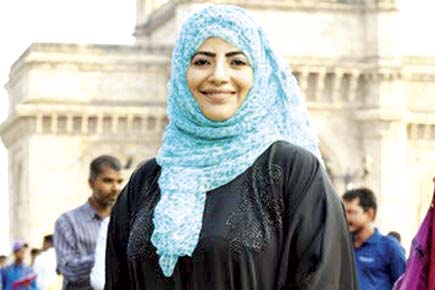
 An Indo-Canada artist, Meera Sethi, lands at Mumbai’s Gateway of India and starts clicking photographs of women. She tells her subjects about the express purpose of the photography, a multi-media project called “Upping The Aunty” an exploration of Aunty-style aesthetic. The female passers-by grant her the permission to shoot. Few ask her questions about the project and fewer object to the main theme.
An Indo-Canada artist, Meera Sethi, lands at Mumbai’s Gateway of India and starts clicking photographs of women. She tells her subjects about the express purpose of the photography, a multi-media project called “Upping The Aunty” an exploration of Aunty-style aesthetic. The female passers-by grant her the permission to shoot. Few ask her questions about the project and fewer object to the main theme.
ADVERTISEMENT
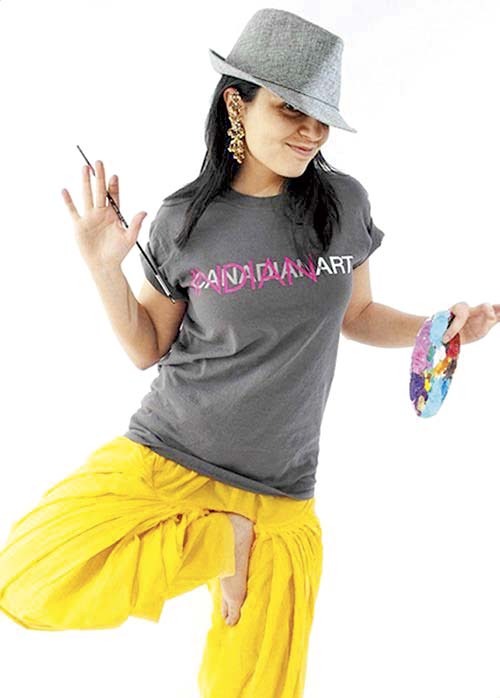
Meera Sethi
Most of the women don’t react to the prospect of an exhibition of photos and paintings of aunties. After capturing 50-odd Aunties at the Gateway precinct and then in various suburbs of Mumbai, Sethi is back in Toronto, where she has incidentally met a few immigrant Aunties from Mumbai. But her search is on. Collecting more Aunties from other cities of India for her showcase, she has appealed for contributions through social media exchanges.
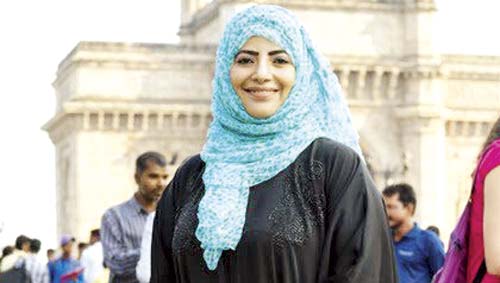
Naima Aunty
If you ever associated the term ‘Aunty’ with stock Bollywood jokes or if you were impressed by the humour of the Aunty Acid comic strip, Meera Sethi's “Upping The Aunty” is the exact reversal of the Aunty stereotype.
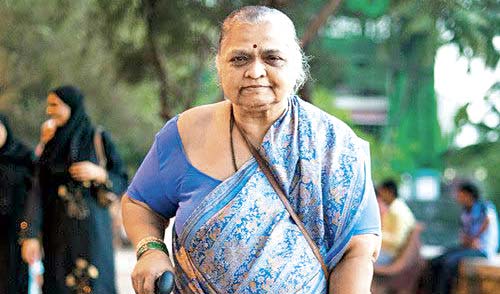
Meena Aunty
Upping the stakes in favour of Aunties, Sethi intends to feature solid real-life women who stand out because of their sartorial choices. In the popular cultural space, determined by Western markers of sophistication, women wearing gauche accessories are mocked at. But Sethi honours the Aunty style as a matter of an individual choice.
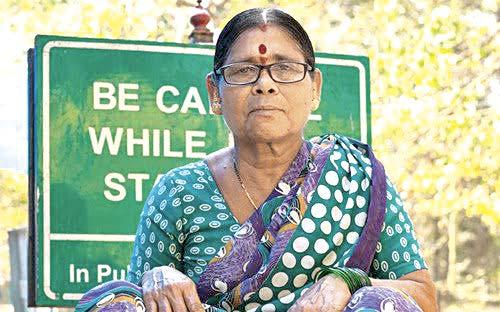
Gita Aunty
Party-funded by the Onatrio Arts Council and the Canada Arts Council, “Upping The Aunty” is a two-part project involving photography and painting. From what has started as a collection of frames of Aunties, the project will end in a gallery of paintings and photos, which will travel to Mumbai in early 2015.
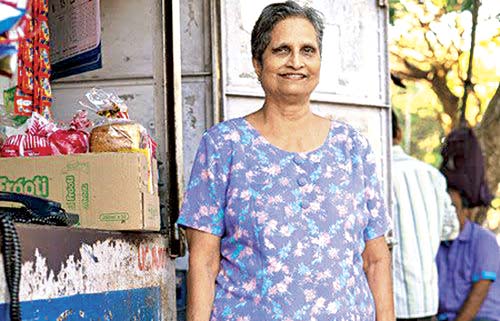
Vera Aunty
It is part of Meera Sethi's body of work in which she (a second generation immigrant in Canada) has explored the relationship between migration, diaspora, fashion, clothing and culture. It matches her earlier works like “Foreign Returned” in which her portraits question the terms ‘foreign’; and ‘home’.
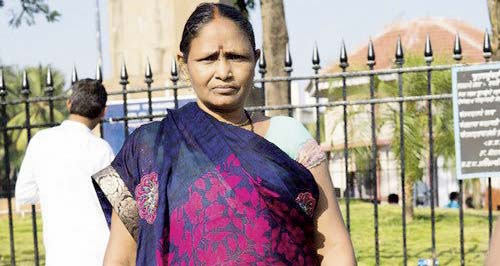
Vimladevi Aunty
Similarly, the Firangi Rang Barangi series feature acrylic paintings that combine North American street style with Indian textiles, garments and jewellery. She has also collaborated on an international project featuring the relatively unknown ways of sari draping.
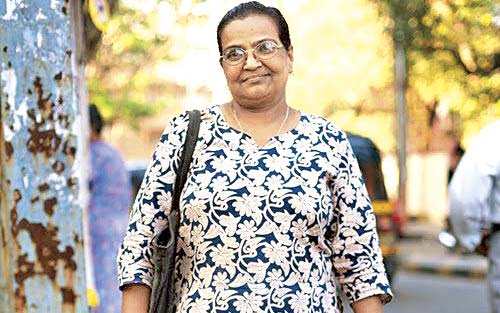
Clara Aunty
What is cool? Who decides?
“Upping The Aunty” is also, in another context, an examination of women's identities. It has a two-point agenda. First: To absorb the colour in the clothing and style choices of women. Second: Not to judge women only through the prism of external choices.
Sethi’s frames capture women wearing and carrying nylon saris, jazzy gajras, huge sunglasses and watches, oversized sports shoes, fancy bags, ornamental hats, bangles and kadas.
The women seem very happy with these choices, unconscious of how they fit into the scheme of things for others. Sethi wants to underline the fact that these women have defined their own fashion choices, irrespective of the parameters of the so-called well-groomed chic world.
A chat with Meera Sethi on how and why she is ‘upping’ the Aunties so far:
Q. How did the idea of an ‘Aunty’ emerge as a cultural motif?
A. I was having dinner in Toronto with two South Asian-Canadian women friends and we began talking in ‘Aunty-speak’; then at some point I made a pun that we were 'Upping The Aunty!’ That dinner is where the idea began. “Aunty” is a strong cultural motif for South Asians where any woman, at least a generation older, becomes an ‘Aunty’. Along with this name reference, comes a relationship that becomes a conduit for cultural knowledge.
Q. What does this multi-media project involve?
A. It is a two-part project; first part is collecting photographs of aunties on the street in various cities, the second is turning those photos in mixed-media paintings — a combination of acrylic paint, photography and other embellishments. The project is self-initiated, self-directed, partly self-funded and partially supported by the Onatrio Arts Council and the Canada Arts Council who have provided some money for both the research and production stages. The project began earlier this year, when I began photographing aunties and will continue until early next year when the paintings will be done. The end product will be a gallery exhibition of paintings and the street photos. There will be an artist statement accompanying each art work. I would like to exhibit them both in Toronto and Mumbai.
Q. How many aunties have you captured so far?
A. More than 50 so far, with more being added every week. I have appealed for more Aunties and hopefully the contributions will enrich the collection further.
Q. You ‘Aunty capture’ shoots are random or planned?
A. I am interested in street fashion photography and blogs like The Sartorialist and Wearabout. I am also interested in the way fashion is translated by those who are not the subjects of this kind of street photography. I am curious to know what motivates our aunties to make the clothing choices they do and how this shifts across borders and life histories.
I carry my camera with me and I shoot only if I spot someone, whom I find interesting. There are also occasions when I go out to a location specifically looking for aunties to be photographed. I did a lot of this in Mumbai, particularly at the Gateway of India on Sunday afternoons where Aunties would come all dressed up for a day out.
Mumbai, being such a cosmopolitan and busy city, had confluence of aunties from all over India, travellers and locals.
There is definitely no one archetype “Mumbai Aunty”, as there is really such a diversity of people. Now I am currently in the process of photographing aunties in Toronto.
Q. In the popular space, Aunty style is a matter of ridicule. Since yours is an exactly opposite stance, how did you break down the concept to your subjects?
A. My project is about celebrating our aunties and their style and respecting the ongoing contributions they make to our communities by passing on social and cultural knowledge. Most of the aunties I approached were flattered. They trusted my good intentions. I think most of them were also completely surprised that someone was admiring them!
Q. All the Aunties in the photo stream that you have so far displayed seem very happy and contented. Did anyone question the context of your project?
A. I always ask for permission before photographing. I also tell them that I am an artist working on a new project that focuses on “Aunty” style. I show them some of my earlier work so they can see that I am not just making this up. Usually, I approach an Aunty and I tell her that I like what she is wearing.
Most women have been flattered; some have even given me a hug! Those are really wonderful moments! Some Aunties have been suspicious and they refuse to have their photos taken. In some cases, the husbands, brothers or sons don’t give permission. My experience in Mumbai was that most Aunties didn't have much time and so didn’t want an extended discussion on my project.
Q. Is there one distilled message in the ‘Upping The Aunty’ project?
A. As much as we speak in jest about our ‘Aunties’, we must also appreciate the social and cultural knowledge they share with us. It is a project of honouring our elders, and celebrating their stories, as they are communicated through aspects of dress.
Q. As an artist, what do you feel about Mumbai’s cultural scene?
A. It is alive and energetic! There is so much going on in Mumbai fashion, visual art, design, music, theatre and films. There is so much to keep up with and absolutely no time to get bored! I’m a 1.5 generation Indian-Canadian. I moved to Toronto at age 2 from New Delhi and returned to India almost every summer. This was by far my longest stay in Mumbai and of course a memorable one.
My association with Mumbai is solidifying. I am working with Kulture Shop, a Mumbai-based design company to create some exclusive T-shirts. My open-ended research residency at “What About Art?” in Bandra, was also fulfilling. It allowed me free space, without the requirement to create finished work. The WAA intends to make working spaces accessible to artists in Mumbai. It gave me an immediate access to the city’s art network. I enjoyed it thoroughly.
South Asian Aunties rock to their own beat
I'm here in Mumbai, India upping the ante on street style. As part of my one-month artist residency in Mumbai, I am documenting “Aunties” with swag. Mostly this consists of “Aunty-spotting” and then explaining in my broken Hindi that I like how they put themselves together and want to document and celebrate this through my art. Some Aunties are indulgent and flattered while others are suspicious. I always ask permission before taking a snap.
I’m interested in changing the game on fashion. Who do we think is fashionable? How do we determine what style is? Who creates cool? South Asian Aunties rock to their own beat. They bring the tradition in fresh ways and are deeply interested in personal expression through clothing. Aunties also hold a special place in our hearts, particularly in the global South Asian diaspora.
In South Asian culture, an Aunty may or may not be a biological relation. She may be a friend of the family or a stranger. But if she is older than you old enough to be your mother’s friend then she is accorded the status of Aunty. Neither our mothers nor part of our peer group, Aunties may be trusted confidantes or gatekeepers of social decorum.
With the new work, I will pay homage to the fabulousness of Aunty style and the importance of their role as transmitters of social and cultural knowledge and practices.
meerasethi.com
Solid Women
Unlike the picture-perfect frames of gym-toned chiselled women, “Upping The Aunty” has real-life identifiable aunties who populate our lives at various junctures. These aunties, though not biologically related to us, give us advice at the right junctures. They have the energy to guide and lead the younger generation in small under-noticed ways.
Sethi feels society owes it to the wise elderly aunts, particularly in the South Asian context where aunties of large extended families double up as caregivers, culinary experts, marriage counsellors, etiquette coaches, career mentors and parenting guides. Sethi’s photo gallery is a tribute to the multi-faceted roles played by women who traverse a large social landscape in their individual lifetimes.
Mumbai Style
It is noteworthy that Meera Sethi chose Mumbai for kicking off the project. A city of colourful men and women, a confluence of Indian ethnicities, Mumbai offered her the best backdrop. She could meet women from all cross sections rural and urban. Very few women asked her for family photos, whereas most of them were ready for the solo frames.
As she explained her concept while ‘Shooting the Aunties’, few women had the mind space and time to understand the tonalities, which again speaks of the hurried pace of life in Mumbai. It is also telling that despite knowing that these photos could be projected on social media and other interactive platforms, the Mumbai Aunties were willing to be part of the photography project. None of them were touched by security concerns while being photographed.
Sumedha Raikar-Mhatre is a Mumbai-based cultural chronicler
 Subscribe today by clicking the link and stay updated with the latest news!" Click here!
Subscribe today by clicking the link and stay updated with the latest news!" Click here!






